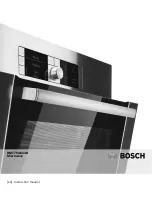
6
a. The rack stop screw has been pre-adjusted at the factory and should not require re-adjustment. However, if you
do attempt re-adjustment, note the following procedure.
Loosen round knurled locking nut by turning counter-clockwise. Then loosen stop screw. With fine focus
adjustment at mid-range, focus on standard slide until sharp image is obtained. Rotate rack stop screw in
clockwise direction until tight. Lock into position with the locking nut. A needle nose plier might be needed to
loosen the round locking nut.
b. Coarse focus tension adjustment prevents the stage from drifting down from its own weight and causing the
image to move out of focus. This has been adjusted at the factory, but over the course of time it may loosen and
cause the stage of the microscope to slip downward on the focusing block.
The tension adjustment collar is located between arm and coarse focus knob on left side of microscope. With a
small jewelers screwdriver, loosen the set screw located in only one of the four holes on tension adjustment
collar. Using supplied “C” wrench, insert pin of the wrench into one of the holes located on tension adjustment
collar, turn collar clockwise to tighten tension, counter-clockwise to loosen tension. After adjusting, tighten the set
screw to lock collar in place.
NOTE: It is recommended that you leave the tension as loose as possible for ease of focusing, yet not so loose
that it permits the stage of microscope to drift downward from its own weight and cause the microscope to “drift”
out of focus.
c. Metal parts: Use a clean, damp cloth to remove dust or dirt from metal parts, followed by a dry cloth.
3. ELECTRICAL MAINTENANCE
The extent of electrical maintenance, by other than a qualified technician, should be LED replacement, battery
recharging and battery replacement. Before maintenance, be sure that recharger is not connected to microscope.
a. Recharging batteries:
Plug output cord from battery charger into DC recharging socket located on back of microscope base. Your
automatic switching recharger operates on 100 to 240 volts AC 50/60 Hz, plug recharger into your AC wall outlet.
The red LED indicator lamp located on recharger will be illuminated when batteries are receiving maximum
charge. After batteries are charged, the red LED indicator lamp will turn to green and charger automatically
switches to “trickle charge”. The charger can be left plugged in, but for safety reasons it is a good idea to
disconnect the charger from the AC wall outlet and the output cord from recharging socket after 12 hours.
Batteries and charger may feel warm when charging, and unplugging the recharger is a safety precaution.
You may operate the microscope light even while it is being recharged. Simply flip light switch to “on” position
and continue using microscope while the recharger is fully engaged.
b. Replacing batteries:
Your microscope includes 3 rechargeable AA nickel metal hydride batteries. These may be recharged up to 500
times, but if you observe that a recharge is providing significantly less than 40 hours of operation. It is probably
time to replace to batteries.
IMPORTANT WARNING: DO NOT USE REGULAR ALKALINE BATTERIES IN THIS MICROSCOPE. ANY
ATTEMPT TO RECHARGE ALKALINE TYPE BATTERIES COULD RESULT IN BATTERIES EXPLODING.
Gently lay microscope on its side or back. Observe small door in center of microscope bottom base. Loosen
slotted screw on door and open. Battery case is mounted on inside of door. Using small Phillips screwdriver,
carefully remove Phillips screw that holds battery case together. Slide lid of case straight out to remove and
expose batteries. Remove all 3 batteries and replace with new rechargeable AA nickel metal hydride batteries,
making certain to insert with correct polarity according to markings on battery holder. Replace lid, close and
secure door.
Follow instructions on new battery packaging to determine if they are already charged, or if they should be
charged before initial use. If recharging is required, following directions in “3.a” above.
c. Replacing LED element:
























